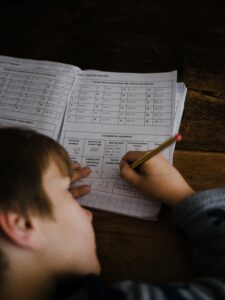What is a learning theory?
Learning theories provide information on the relationship among instruction and design – indicating what techniques and strategies will work best within different contexts, with different learners (Ertmer & Newby, 2018). Below, I will touch on three main learning theories: behaviourist, cognitivist, and constructivist, as well as discuss how the same lesson would be taught under the guidance of each individual theory.
Lesson scenario: A high school social study teacher is planning a class on climate change.
Behaviourist Theory

Photo by Annie Spratt on Unsplash
Behaviourist learning is based on the key elements of stimulus, response, and the association between the two (2018). It focuses on reinforcement and outcomes – viewing the learner as reactive to learning, rather than participating in their learning. Behaviourists focus on habits and periodic practice to transfer knowledge from educator to learner.
How would a behaviourist teach climate change?
- Guided practice, repetition and recall: Teacher would guide the lesson on climate change while students listened. They would then be required to complete task(s) based on what they learned. Tasks could include drills, flash cards, organizers, and finally testing.
- Rewards/punishments: Students may be rewarded (or punished) for their behaviour and/or learning throughout the week/lesson depending on how well they meet the teachers standards (ie. treats or prizes at the end of the week, or consequences for not completing homework).
My take:
Behaviorism can be effective for subjects that require a lot of memorization (ie. math and science) but it does not address the many unobservable behaviours that affect learning as well as comprehension and critical thinking skills.
Cognitivist Theory

Photo by Jo-Anne McArthur on Unsplash
Cognitivist theory understands that individual learners come to class with varying experiences that will impact their learning abilities (2018). It is the role of the educator to determine how to connect and accommodate students’ prior knowledge to newly acquired skills and learning.
How would a cognitivist teach climate change?
- Prior knowledge: The teacher would start the lesson by asking the class what they already know about climate change. Students would write their answers on the board and the teacher would adjust their lessons based on what students already know.
- Connection building: Students would gather the information they learned about climate change and compare it to another idea. (ex. concept mapping)
My take:
I value taking students prior knowledge into account while planning lessons as everyone comes with varying degrees of what they already know on any topic. Cognitivism provides an opportunity for students to explore these connections and reflect on old and new knowledge, which is great for expanding their thinking.
Constructivist Theory

Photo by Li-An Lim on Unsplash
Constructivist learning theory focuses on ‘meaning-making’ through individual experiences (2018). It considers individual experiences, interpretations, interactions, and building learning through scaffolding old and new knowledge. Constructivism focuses on active application of ideas and knowledge (2018).
How would constructivists teach climate change?
- Meaning making: Teacher would present multiple perspectives on climate change and have the learners collaborate on researching and presenting differing ideas/knowledge.
- Authentic experiences: Students may choose to attend a rally, write to their local leaders, or start a school wide campaign that contributes to authentic climate change. Great for inquiry/project-based learning projects!
My take:
Constructivism is great for diverse learning styles, student ownership and motivation. It provides students with opportunities to interact with each other and their communities while guiding their own learning, and reflecting on the process.
References:
Ertmer, P. A. & Newby, T. (2018). Behaviorism, Cognitivism, Constructivism: Comparing Critical Features From an Instructional Design Perspective. In R. E. West, Foundations of Learning and Instructional Design Technology: The Past, Present, and Future of Learning and Instructional Design Technology. EdTech Books. Retrieved from https://edtechbooks.org/lidtfoundations/behaviorism_cognitivism_constructivism


Recent Comments